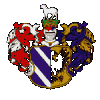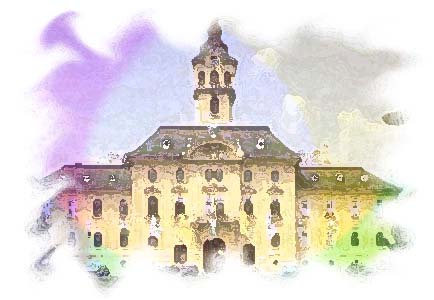 |
||
 Szeged |
 |
|
|
Szeged is situated near the southern border of Hungary, just to the south of the mouth of the Maros River, on both banks of the Tisza River. A large part of the town lies on the right bank, while Újszeged (New Szeged), a suburban district of residential housing and parks, is on the left bank of the river. Szeged is the cultural and economic centre of south-eastern Hungary, and a thriving university town, also famous for its open-air theatre. The city centre is marked by the medieval Tower of St. Demetrius and The stately twin spires of the Votive Church. This cathedral was built in the first decades of our century to commemorate the revival of the city after the devastating flood of the river Tisza in 1879. By Hungarian standards, Szeged is a large city, with a population of 177,000. The climate is very favourable; the mean temperature is about 52 °F (16 °C), somewhat higher than in the rest of the country. Szeged is sometimes called the City of Sunshine as there are an average 2,000 hours of sunshine annually. The area of Szeged has been inhabited since Roman times. During the period of the Great Migration, the fifth through the ninth centuries, it was a meeting place for various tribes. Because of this, the region is abundant in valuable archaeological sites. The settlement was given the rank of free royal town in 1246; it was an important monastic centre in the later Middle Ages, witness to this is the beautiful Gothic Franciscan church and monastery, founded under King Matthias in the 1470s. During the 16th and 17th centuries the city suffered Turkish occupation and served as an administrative centre for the Ottomans. In 1719 the town regained its free royal rights and in 1721 a famous grammar school was established here. In the Reform Period, begun in 1825 and associated with István Széchenyi and Lajos Kossuth, the development of the town accelerated. Industrial works and banks sprang up, and, at the same time, the ever improving highway and railway system of the country reached Szeged. In the War of Independence of 1848-49 Szeged played a prominent part. The famous recruiting speech of Lajos Kossuth was delivered here in the Fall of 1848. Szeged was the seat of the Revolutionary Government in July 1849. In the second half of the 19th century citizens of the town and surrounding area made efforts to populate the steppe-like region, to make agriculture thrive and to develop areas within the town itself. The huge flood of 1879, mentioned earlier, turned out to be a blessing in disguise. Although only 300 houses of the total 6000 of the city survived the reconstruction that followed – with the help of Vienna, Paris, London, and other European cities – created a modern city with an exemplary layout of avenues and boulevards with a strikingly homogenous architecture that preservers the Eclecticism and Art Nouveau of the turn of the century. The economic and cultural importance of Szeged greatly increased after the flood in the developing period of Hungarian capitalism which is associated with the period of the Austro-Hungarian Monarchy. Szeged retained its importance during the two world wars, and later on too, up until today. The city is not only a county capital but the natural economic and cultural centre of a large region reaching across the neighbouring Yugoslavian and Rumanian borders. Local industry is reputed for food production, especially salami and paprika (the Pride of Szeged paprika is a common brand in American supermarkets, too). Textiles, oil processing, clothing production are also significant, but the city is most famous for its culture, including its various institutions of higher education. Representative schools are the Attila József University, the Albert Szent-Györgyi Medical University, the Gyula Juhász Teacher Training College, the Ferenc Liszt College of Music, the College Catholic Theology, and the College of Food Technology and Engineering. Because of the specific structure of university education in Hungary, these institutions do not individually have as many students as average Western European, or American universities. Yet, the total student population of ten to twelve thousand fills the streets and squares of the inner city. As an American travel-guide once noted: "Attila József University's campus at Dugonics tér [square] is always swimming with students – time and season don't seem to make any difference. Speak English loudly, read Newsweek conspicuously, or simply look incredibly lost – chances are you'll make a friend or friends, or possibly find yourself a spot to sleep on somebody's floor." In spite of the fact that Szeged has the atmosphere of a quiet college town, the city is surprisingly cosmopolitan. The UNESCO-sponsored international Centre for Biological Research of the Hungarian Academy of Sciences, as well as the other institutions of higher education, host a great number of foreign scholars and students. The local opera is second in reputation only to the one in Budapest. Theatres, cinemas, clubs, riversides, parks, swimming pools and sports grounds provide plenty of possibilities for recreation. During the summers the open air theatre in front of the Cathedral attracts over 4000 spectators each night to special opera and musical performances. Adjacent to these performances folklore festivals, exhibitions, sports events (including speedboat races and regattas on the world class rowing course) and the hospitable swimming pools and beaches make Szeged a desired holiday spot. (Source: http://www.szegedportal.hu )
|
||